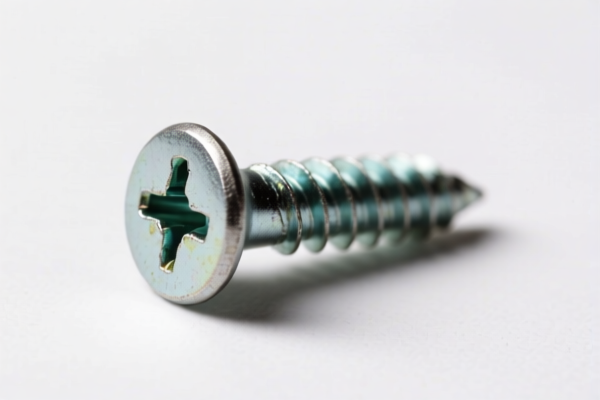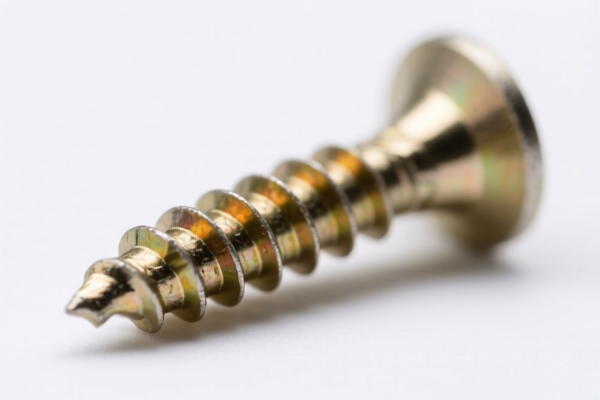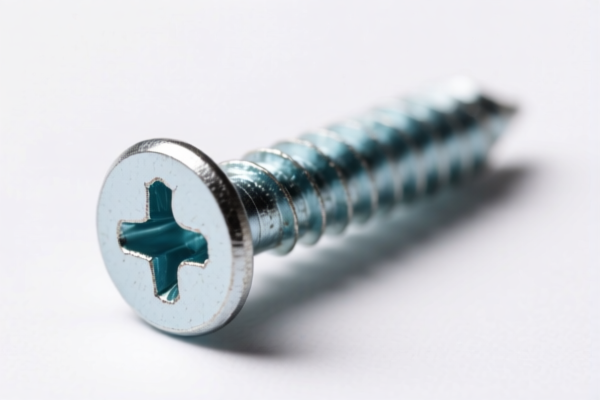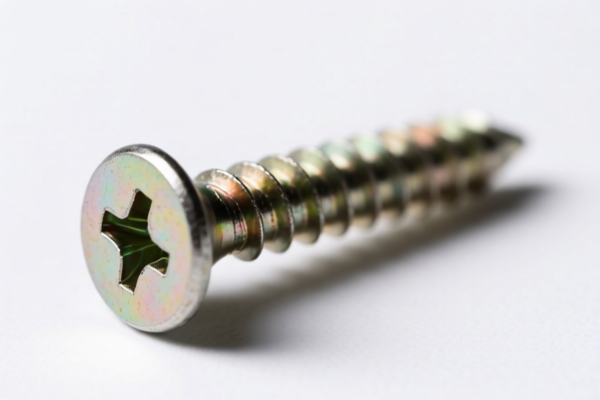| HS Code | Official Doc | Tariff Rate | Origin | Destination | Effective Date |
|---|---|---|---|---|---|
| 7318141030 | Doc | 86.2% | CN | US | 2025-05-12 |
| 7318141060 | Doc | 86.2% | CN | US | 2025-05-12 |
| 8311900000 | Doc | 55.0% | CN | US | 2025-05-12 |




Self-Tapping Screw
A self-tapping screw is a screw that can tap its own threads as it is driven into a material. Unlike standard screws which require a pre-tapped hole, self-tapping screws create their own hole, simplifying assembly and reducing the number of required parts. They are commonly used in a wide range of applications, from DIY projects to industrial manufacturing.
Material
Self-tapping screws are manufactured from a variety of materials, chosen based on the intended application and the materials being joined. Common materials include:
- Carbon Steel: Offers high strength and is often zinc-plated for corrosion resistance. Suitable for general-purpose applications.
- Stainless Steel: Provides excellent corrosion resistance, making them ideal for outdoor applications or use with corrosive materials. Common grades include 304 and 316 stainless steel.
- Alloy Steel: Offers increased strength and hardness, used in demanding applications.
- Brass: Offers good corrosion resistance and conductivity, often used in electrical applications.
- Plastic: Used for lightweight applications where corrosion resistance is paramount and strength requirements are lower.
Purpose
The primary purpose of a self-tapping screw is to fasten materials together without the need for pre-drilling or tapping. This simplifies the assembly process, reduces manufacturing time and costs, and can improve joint strength in some applications.
Function
Self-tapping screws function through a combination of features:
- Thread Design: The threads are designed to cut into the material as the screw is driven in, creating a mating thread.
- Point Style: The point style facilitates initial penetration and thread formation. Common point styles include Type A, Type B, and Type AB (see below).
- Hardness: The screw's hardness allows it to cut into the material without stripping or damaging the threads.
- Flange (Optional): Some self-tapping screws have a flange under the head to provide increased bearing surface and prevent over-tightening.
Usage Scenarios
Self-tapping screws are widely used in:
- Sheet Metal Fabrication: Fastening sheet metal components in HVAC systems, automotive bodies, and appliances.
- Woodworking: Joining wood components, particularly in applications where pre-drilling is undesirable.
- Plastic Assembly: Fastening plastic parts in electronics, toys, and furniture.
- DIY Projects: General-purpose fastening in home repairs and construction.
- Automotive Repair: Securing panels and components in vehicles.
Common Types
Self-tapping screws are categorized based on their thread design, point style, and head type.
- Thread Types:
- Type A: Designed for thin sheet metal. Features a sharp, gimlet point for easy penetration.
- Type B: Designed for slightly thicker sheet metal or plastic. Features a blunt point and wider threads.
- Type AB: A combination of Type A and Type B, suitable for a wider range of materials.
- Point Styles:
- Acute Point (Type A): Self-tapping, for thin materials.
- Blunt Point (Type B): Self-tapping, for thicker materials.
- Drill Point: Includes a drill-like tip to drill its own hole, eliminating the need for pre-drilling.
- Head Types:
- Pan Head: Offers a low profile and wide bearing surface.
- Flat Head: Sits flush with the surface when installed.
- Oval Head: Offers a decorative appearance and a partially recessed installation.
- Round Head: Offers a dome-shaped appearance and a slightly raised installation.
- Truss Head: Offers a larger bearing surface and a low profile.
Considerations
- Material Compatibility: Choose a screw material that is compatible with the materials being joined to prevent corrosion or galvanic reactions.
- Pilot Hole Size: While self-tapping screws eliminate the need for pre-drilling in some cases, using a pilot hole can improve ease of installation and prevent stripping, especially in harder materials.
- Screw Length: Choose a screw length that is appropriate for the thickness of the materials being joined.
- Torque Control: Use appropriate torque control to avoid over-tightening or stripping the screw.
Self-tapping screws are threaded articles, typically used for fastening materials together by creating their own threads as they are driven in. They are commonly made of iron or steel. The following HS codes may be relevant based on the provided information:
- 7318141030: This HS code covers screws, bolts, nuts, coach screws, screw hooks, rivets, cotters, cotter pins, and washers (including spring washers) of iron or steel; threaded articles; self-tapping screws; having shanks or threads with a diameter of less than 6 mm; of stainless steel. The total tax rate is 86.2%, comprising a 6.2% base tariff, a 25.0% additional tariff, and a 30.0% additional tariff applicable after April 2, 2025, plus a 25% additional tariff on steel or aluminum products.
- 7318141060: This HS code also covers screws, bolts, nuts, coach screws, screw hooks, rivets, cotters, cotter pins, and washers (including spring washers) of iron or steel; threaded articles; self-tapping screws; having shanks or threads with a diameter of less than 6 mm; other. The total tax rate is 86.2%, comprising a 6.2% base tariff, a 25.0% additional tariff, and a 30.0% additional tariff applicable after April 2, 2025, plus a 25% additional tariff on steel or aluminum products.
Chapter 73: Covers articles of iron or steel. Heading 7318: Specifically covers screws, bolts, nuts, coach screws, screw hooks, rivets, cotters, cotter pins, and washers. Subheading 731814: Refers to threaded articles. 73181410: Further specifies self-tapping screws. 7318141030/7318141060: Differentiates based on shank/thread diameter (less than 6mm) and material (stainless steel vs. other).
Please note that both HS codes have a total tax rate of 86.2%. The distinction between 7318141030 and 7318141060 depends on whether the self-tapping screws are made of stainless steel and have a shank or thread diameter of less than 6 mm. Additionally, a 25% additional tariff applies to steel or aluminum products.
Customer Reviews
No reviews yet.